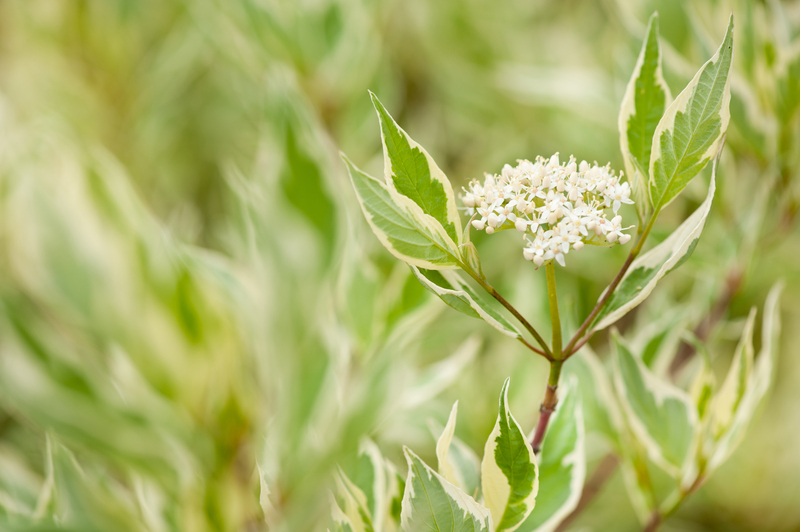Uncover Your Green Thumb: Transformative Hedge Trimming Techniques
Posted on 02/09/2025
Uncover Your Green Thumb: Transformative Hedge Trimming Techniques
Is your garden yearning for a touch of artistry? Hedge trimming is a cornerstone of garden maintenance, offering both practical and aesthetic advantages. Unveil the secrets to developing a green thumb with this comprehensive guide to transformative hedge trimming techniques. Whether you're a novice home gardener or an experienced horticulturalist, this guide will help you achieve lush, beautifully shaped hedges that are the envy of the neighborhood.

Why Effective Hedge Trimming Matters
- Promotes Healthy Growth: Regular pruning encourages vigorous new shoots and denser foliage.
- Enhances Aesthetics: Well-manicured hedges create crisp lines, elegant shapes, and tidy boundaries, boosting your property's curb appeal.
- Improves Airflow & Sunlight: Thinning overcrowded branches allows for better light penetration and healthier hedge interiors.
- Prevents Disease: Removing dead or diseased branches minimizes pest and pathogen risks.
- Supports Wildlife: Strategic cutting can foster habitats for birds and beneficial insects.
Discovering transformative hedge clipping methods is essential for both plant vitality and garden design.
Essential Tools for Transformative Hedge Trimming
Before you start snipping, ensure you have the proper equipment to guarantee both efficiency and plant health.
- Hand Shears: Ideal for detailed, light pruning or sculpting intricate topiary forms.
- Lopping Shears: Excellent for thicker branches beyond the scope of typical hand shears.
- Electric or Gas-powered Hedge Trimmers: Perfect for tackling long, overgrown hedgerows quickly.
- Gloves and Safety Glasses: Essential for personal protection while working with foliage and sharp tools.
- Ladder: For higher hedges to ensure safe, balanced trimming.
Pro Tip: Always keep blades sharp and clean to prevent the spread of plant diseases and to maintain clean, tidy cuts.
Choosing the Right Time to Trim Your Hedges
Timing is critical when applying hedge trimming techniques. Pruning at the wrong season may stress your plants or stunt their growth. Here are some timely guidelines:
- Evergreens: Late spring or early summer is best, right after the new growth matures.
- Deciduous Hedges: Late winter or early spring, while dormant, reduces sap loss and encourages spring growth.
- Flowering Hedges: Prune immediately after blooming to ensure abundant flowers the following year.
- Fast-growing Hedges: May require multiple trims each season to maintain desired shapes.
Fundamental Hedge Trimming Techniques
Unlock your green thumb by mastering these foundational methods:
- Formative Pruning: Essential in the first 2-3 years. Regular light cuts direct desired shape and encourage bushy a structure. For newly planted hedges, don't be afraid to cut back hard for strong regrowth.
- Maintenance Trimming: Once established, clip 1-2 times per year to keep shape and density. Maintain a slight taper, with the base wider than the top, for sunlight access.
- Rejuvenation Pruning: For overgrown or neglected hedges, consider cutting back severely in staggered phases to rejuvenate.
Shaping Your Hedges: Styles & Techniques
Innovative hedge cutting methods aren't just about health--they're about style, too.
-
Straight Hedges:
- Use string lines or stakes: For flawless flat tops and sides.
- Work from the bottom up: Ensures weight is removed evenly and avoids lopsided results.
-
Curved or Arched Hedges:
- Template Guidance: Cardboard or plywood shapes help sculpt arcs or domes.
- Slow, incremental cuts: Prevents over-pruning mistakes.
-
Topiary and Creative Shapes:
- Patience and Vision: Complex forms like spirals or animals require gradual sculpting.
- Detail shears: Perfect for finishing touches and tight curves.
Step-By-Step Guide to Transformative Hedge Trimming
- Prepare Your Tools: Sharpen and disinfect blades. Gather gloves and safety glasses.
- Set Your Trim Lines: Use stakes, taut string, or chalk lines for precision.
- Start at the Bottom: Working upwards prevents uneven spots and allows cuttings to fall away cleanly.
- Maintain the Taper: Keep hedge sides angled so the base is wider, enhancing light exposure and stability.
- Trim in Several Passes: Remove small sections at a time for a uniform result and reduced shock to the hedge.
- Finish With Detail Work: Use hand shears for corners, curves, and intricate edges.
- Clear Debris: Rake up fallen clippings to reduce pest issues and maintain tidiness.
Advanced Hedge Trimming: Professional Secrets
Take your hedge shaping prowess to the next level with these expert insights:
- Double-Sided Trimming: Alternate sides with each pass to maintain overall symmetry.
- Layered Hedges: Plant and trim in tiered heights for added visual depth.
- Staggered Pruning: Tackle especially thick or old hedges in sections over several years to minimize stress and regenerate plants.
- Integrated Lighting: Embed low-voltage lights during shaping for dramatic nighttime highlights.
- Edible Hedges: Try transforming berry or herb shrubs with careful cuts for dual beauty and harvest.
- Living Fences: Train woody plants with interweaving branches to form impenetrable, eco-friendly barriers.
Top Transformative Hedge Plants for Beginners
If you're just discovering your green thumb, choose resilient, easy-to-shape species for frustration-free gardening:
- Boxwood (Buxus sempervirens): Classic, dense, and perfect for topiary.
- Privet (Ligustrum): Fast-growing, adaptable, and forgiving of hard pruning.
- Yew (Taxus baccata): Evergreen, long-lived, and holds precise shapes beautifully.
- Photinia: Vibrant new growth and good for formal or informal styles.
- Hornbeam (Carpinus betulus): Attractive leaf texture and tolerates heavy trimming.
- Lonicera nitida (Shrubby honeysuckle): Fast, dense, and ideal for small topiary.
Common Hedge Trimming Mistakes and How to Avoid Them
Even seasoned gardeners can fall prey to classic errors. Uncover your green thumb and maximize the health of your garden hedges by sidestepping these pitfalls:
- Cutting at The Wrong Time: Leads to poor regrowth or lost blooms. Always research species-specific schedules.
- Flat Sides All the Way Up: Hedges with vertical sides often become bare at the base due to poor light. Always maintain a gentle pyramid shape.
- Over-trimming: Removing too much foliage at once can leave hedges vulnerable to pests and sunburn.
- Dull or Dirty Blades: Makes ragged cuts that invite disease. Clean and sharpen after each use.
- Ignoring Wildlife: Always check for nesting birds in spring and avoid disturbing them--compliance with wildlife laws is crucial.
- Inconsistent Trims: Skipping trims leads to woody, sparse growth. Plan a regular maintenance calendar.
Hedge Trimming for Sustainability
Modern gardening values sustainability as much as beauty. Here's how to make your hedge-shaping routine eco-friendly:
- Electric Tools: Choose battery-powered over gas for fewer emissions and quieter operation.
- Compost Clippings: Shredded trimmings add vital nutrients to garden beds or compost heaps.
- Natural Pest Control: Healthy, well-groomed hedges attract beneficial insects and birds.
- Minimal Chemical Use: Select disease-resistant native species and use organic fertilizers where possible.
Post-Trim Hedge Care Tips
Even the most expert hedge shaping techniques benefit from careful aftercare:
- Watering: Adequate hydration is vital, especially after major cuts during dry spells.
- Mulching: A layer of organic mulch retains moisture and suppresses weeds.
- Feeding: Apply slow-release fertilizers to promote lush regrowth.
- Inspect for Pests: Trimmed edges can attract new critters--act quickly if infestations appear.
- Monitor for Disease: Watch for wilting, blackened stems, or spots, and treat promptly.
Seasonal Hedge Trimming Checklist
Maintain stunning hedges all year with this seasonal guide:
- Early Spring: Prune dormant deciduous and evergreen hedges, clear dead wood.
- Late Spring: Lightly trim after new growth hardens, shape topiary designs.
- Mid-Summer: Second trim for fast growers, clean sharp lines for formal hedges.
- Early Autumn: Light neat-up trim before winter, clear debris to prevent rot.
- Winter: Avoid heavy cuts, but tidy minor stray growth on evergreen species.

Frequently Asked Hedge Trimming Questions
-
Q: How often should I trim my hedges?
- A: Most hedges benefit from 1-3 trims per year, depending on the plant and style.
-
Q: What's the best shape for healthy hedges?
- A: A gentle taper--wider at the base--promotes healthy, full growth at all levels.
-
Q: Can I turn an old, woody hedge into a compact one?
- A: Yes, by cutting back in stages over several seasons to rejuvenate without shock.
-
Q: Are hedge trimmings safe for compost?
- A: Absolutely! Shred them first for faster breakdown, unless the clippings are diseased.
Conclusion: Unleash Your Green Thumb Today
Mastering transformative hedge trimming techniques turns uninspired shrubs into show-stopping garden features, boasting both health and beauty. With the right tools, timing, and approach--plus a touch of creativity--you can develop your green thumb and achieve remarkable results in any landscape. Start with these tips today and enjoy a garden that flourishes, season after season.
Ready to get started? Embrace these expert-approved hedge trimming methods and discover how rewarding shaping your own green oasis can be!

